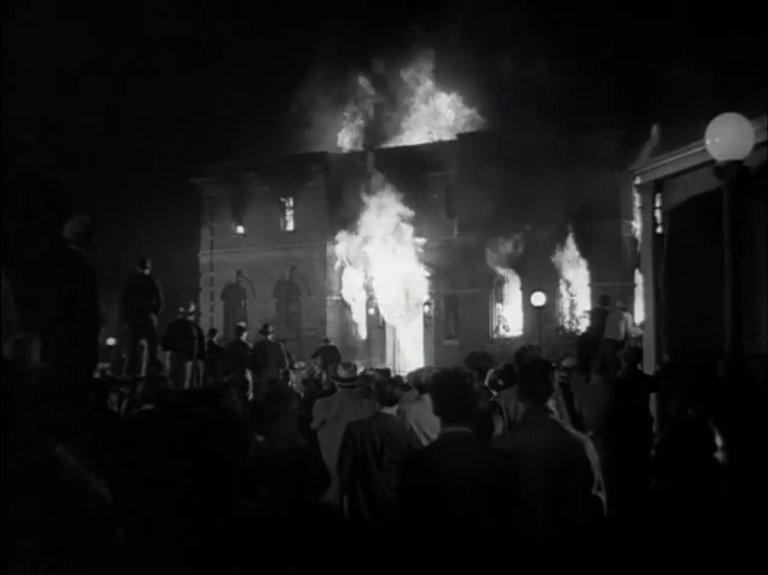NOOB FILM REVIEW - FURY by FRITZ LANG (1936) pt.1

READING THE SUBTEXT - MEDIA MASS PSYCHOSIS AND MOB LYNCHING
MEDIA MASS PSYCHOSIS
The film establishes its story well with the development of the main protagonist, Joe Wilson in the first act. It is during the second act that it is obvious to me this is not your normal black-and-white love story which I thought it was. This is Fritz Lang's noir. The same director that 10 years before (1927) has gone out and made one of the greatest film of all time. Metropolis.
While Metropolis talks about the dystopian future that humanity living with machines, in Fury, it is the introduction of the screen. The screen has now become our culture in 2023 and most of our judgment of everything comes from what we see on it. The screen that has become a part of of what we are.
Back then in 1936, the screen was still new and revolutionary. Yet Fritz Lang has overseen the impact of it on society. He depicted the society frozen in their expression, lit from below. Zombie-like. It is made worse by the already bad influence the newspaper has. Like how the film Citizen Kane shows.
In this film, Fritz Lang demonstrates how the concept of 'Chinese Whispers' works. How one thing could transform and be blown out of proportion by the time it gets to the last man in line. And for newspapers to sell, sensationalism is one of the main ingredients.
What came out from the big screen was mostly film from auteurs. Yet today, everyone has the power with their smaller cameras and screens, with almost unlimited reach. This has led to a critical version of what Existentialist philosophers refer to as Mass Psychosis.
In 1895, the audience panicked at the first film (L'Arrivée d'un train), showing a train heading their way. Moving forward to the year 2001 and tragedy of the 911 coming from the same screen. The art of using the medium as the tool of deception was perfected.
And here, Fritz Lang prophesied that what is recorded can be used in a court of law as evidence to ensure justice. But on the other hand, it is also wide open to manipulation and it is too easy to distort the human perception of things. Let alone with all the 'magic' we have today.
The ending somehow surprised me. It is a typical romantic genre "happy ending" instead of the dark and open noir, Fritz Lang's film ending. It is clarified later in the post-screening session by Anwardi Jamil and U-Wei Haji Saari. Fritz Lang didn't have full control as he did when he was in Germany because of the studio and guild system being used by MGM after his migration to Hollywood. Just for it to land nicely with the majority audience. Which ironically has vindicated the subtext in Fury on the screen and who controls it.
Also, the irony of the photos attached and their timing (the film screening by KLFS happens at the same time as the street demo) speak for themselves. Which leads us to the next subtext.
(to be continued in pt.2)